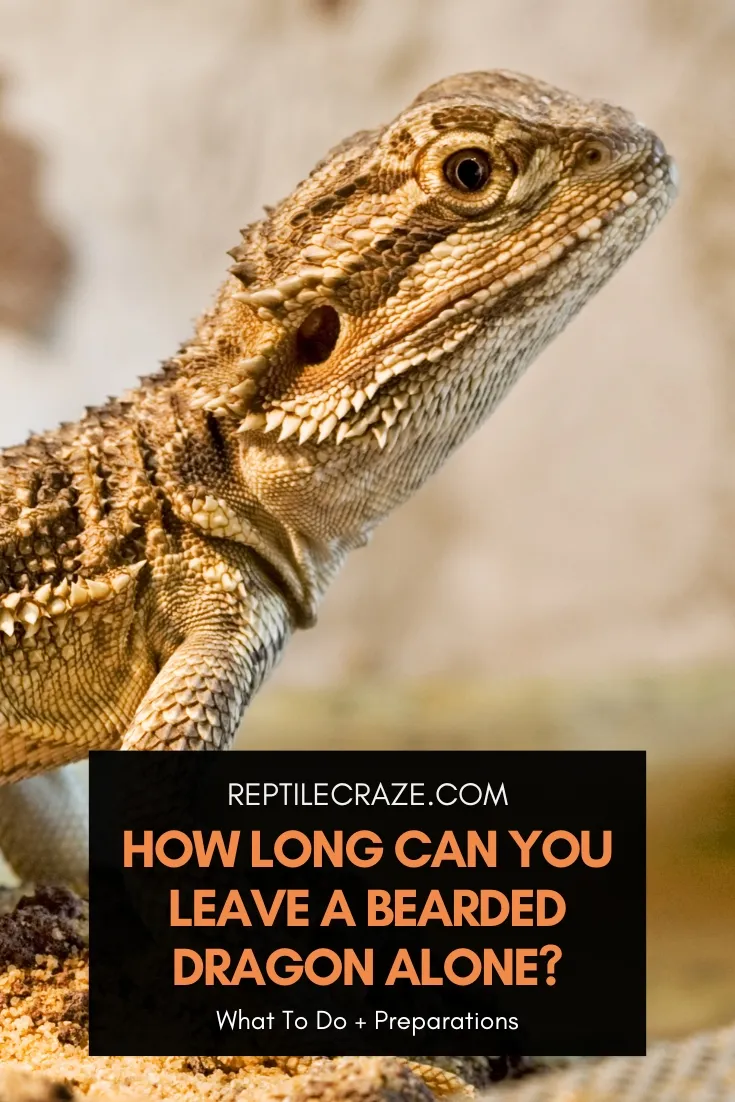
Going away without your beardie can be tough, we definitely know that! However, outlining your pet’s daily needs will help you understand how much they can tolerate being alone. This way, you’ll know they’re comfortable and healthy.
The time you can leave your bearded dragon alone depends on its age. It’s not recommended to leave a baby beardie alone, while juveniles and subadults can handle a day without you. Adults will do fine for 2-3 days. Seniors will appreciate having you around at all times.
Keep reading to learn what stands behind these recommendations! We’ll also share tips on what you can do with your beardie if you leave on vacation!
Table of Contents
How Long Can You Leave Your Bearded Dragon Alone?
The answer to this question depends on your bearded dragon’s age and needs. To give you a quick overview, have a look at the table below. We’ll explain everything in detail after that.
| Age | Baby | Juvenile | Subadult | Adult/mature adult | Old age |
| Period to be left alone | Not recommended | 1 day | 1 day | 2-3 days; maximum 4 | Not recommended |
Babies
Babies are very fragile and require much care and attention. In the first few weeks of their lives, they learn how to eat, drink, and develop routines.
During this period, you should interact with them several times a day to ensure that the growth process is going smoothly and that the beardie eats properly without any problems.
Juveniles
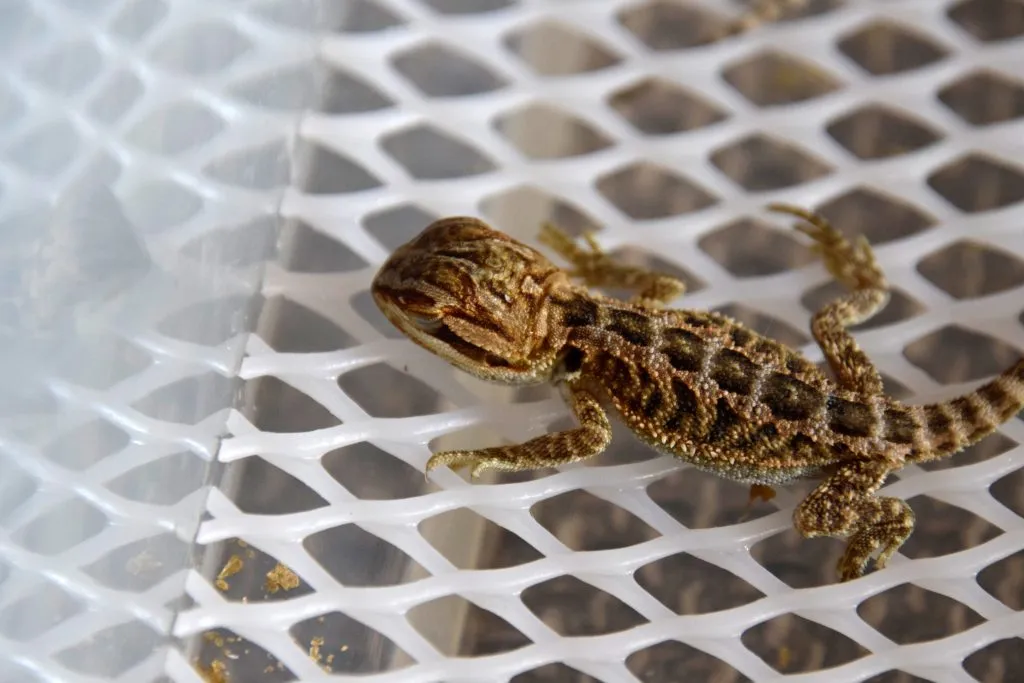
Veterinarians and herpetoculturists say that bearded dragons are considered juveniles when they’re around 2 to 4 months old.
At this age, juveniles should be supervised. Although they’re already accustomed to a daily routine, their size increases at an extraordinary rate during these months. Therefore, they have a crazy appetite.
This is the age when bearded dragons are known to nip off other beardies’ tail tips or toes. Basically, all they know as juveniles is eating, growing, and being territorial – that’s it.
Subadults
The subadult stage starts at around four months old and lasts until the beardies reach sexual maturity. During this period, their metabolism slows down a bit, and they start eating more greens.
Although bearded dragons aren’t as crazy about
Adults and Seniors
Once they reach sexual maturity, bearded dragons stop growing so fast due to hormonal changes. As adults, they focus more on their reproductive instincts and social interactions.
In the fourth breeding year, bearded dragons are considered mature adults. They register little to no growth and don’t require as much socialization.
The old stage starts when bearded dragons are 6-7 years old. They stop growing and become weaker.
When they’re very old, beardies may stop feeding and start exhibiting prolonged lethargy. During this time, they require much water and comfort. You might also want to help your beardie eat something.
Watch this video to learn more about feeding old bearded dragons.
Those that aren’t lethargic yet can do well if left alone for one day, but if your beardie shows clear signs of distress and refuses to eat, you should supervise it.
You certainly don’t want to leave your dear pet alone during its last months, weeks, or even days.
Periods longer than these can cause your bearded dragon much stress and an increased risk of illnesses linked to poor
Therefore, if you want to leave your reptile for longer, you should prepare for it thoroughly. Keep reading to learn how!
Pro tip: there’s another thing you should consider – may your beardie be pregnant? Is it close to laying the eggs? Your bearded dragon will appreciate your care!
Will Your Beardie Get Lonely?
Veterinarians suggest that bearded dragons enjoy human attention but do not particularly require it for a pleasant “lifestyle.”
Therefore, if you leave your pet alone for a few days, you can rest assured that it won’t get too lonely, as it doesn’t need daily entertainment.
Some pet parents reported that their dragons became slightly depressed and refused eating while they were away and returned to normal once they came back.
On the other hand, since there’s no scientific proof that bearded dragons truly get depressed if their owners leave them for a couple of days, we’re sure yours will be fine, too!
What to Do with Your Bearded Dragon While on Vacation?

We’re delighted that you’re going on vacation and hope you’ll have a great time! That’s why we want to help you get everything ready for the upcoming trip.
You have four options you can choose from, depending on your preferences. Whatever you choose, we’re sure your bearded dragon will be comfortable and happy, as long as you follow all the instructions!
1. Take Your Bearded Dragon on Vacation
Doesn’t it sound amazing to have a vacation with your bearded dragon?! This might be challenging, since you’ll need to take all its
On the other hand, it may be an excellent option if you leave for weeks or months and want to go the extra mile to have your beardie with you.
The steps we’ve included below are only regarding the things you need for your bearded dragon while in transit.
Once you reach your destination, you’ll have to provide it with all the needed conditions for proper growth and thriving. In short, there should be no difference whatsoever between its
In fact, if it’s possible for your bearded dragon to travel in its
- Ensure that the ones you’re traveling with are comfortable around reptiles.
- Choose a container large enough for your pet to move while in transit. It must be lined with soft material and securely closed. The container needs to be well-ventilated – just make some holes on the lid and at least on one side. A large shoebox could work well as a transit container.
- Temperature is the most important, especially if you’re traveling to a colder place. You can use these UniHeat warmers that can keep your pet warm for around 40 hours. If you’re traveling to very cold or hot areas, consider placing your beardie into a small container, then into a styrofoam box. The temperature typically shouldn’t go lower than 65-70 degrees Fahrenheit and higher than 90 degrees.
- Ensure to remove poop regularly if the trip lasts more hours.
- Pack enough
food for the trip. - If you’re traveling by plane, check whether your airline allows reptiles. Pet-friendly airline companies usually allow reptiles only in cargo and will require a booking and a fee.
- If you’re traveling by car, ensure to drive carefully because it will minimize the risk of your beardie getting injured. Moreover, ensure to buckle your reptile’s carrier.
- Minimize the time your bearded dragon spends out of its natural habitat and thriving conditions to the minimum.
- Pack a leash and harness if you plan to take your beardie outside during your trip.
Tip: If you would like to get a leash for your beardie, we recommend taking this one. It even comes with a sling carrier, which is great when you are traveling with your beardie.
Check out this video for more details on traveling with your bearded dragon.
2. Find A Caretaker
The best option for your bearded dragon is to have a caretaker check on it. While your pet may feel your absence, it will enjoy the comfort of its habitat.
The caretaker must know how to handle and care for a bearded dragon because they will have to feed and hydrate it, as well as check the light, temperature, and humidity levels.
Moreover, they must know how to understand whether your reptile is healthy or sick.
Pet sitters may be required on a daily basis for actively growing bearded dragons, while adults can be checked on only once in a while.
If this is not an option, you can hire a professional pet sitter experienced in caring for bearded dragons.
3. Board Your Bearded Dragon
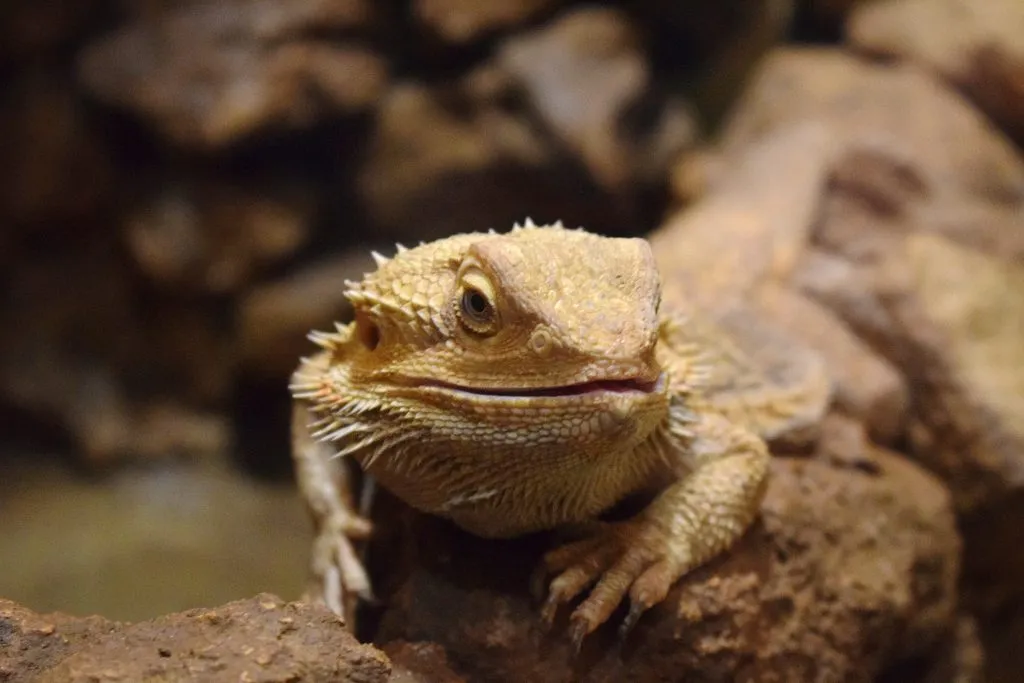
Boarding your bearded dragon sounds complicated, but it’s much easier than you’d think. In fact, many reptile or pet stores offer beardie boarding services. You can check with some breeders and vets, as well.
4. Induce Brumation
Inducing brumation is a long-term process and probably the most challenging option. Furthermore, this is recommended for adults only.
Besides, your reptile should be checked by a vet before deciding on brumation. This might not be an option if it is unhealthy or carries any parasites.
Once the vet approves brumation, you should start making arrangements at least two weeks before your trip. You’ll have to gradually cut off
food , shorten daylight hours, and lower the temperature.
Before leaving, you should ensure your beardie’s stomach is completely empty. Otherwise, the
Your beardie will regard these changes as signs that winter is coming and it needs to enter a state of dormancy. This is generally recommended if you’re planning a trip that will last weeks or months.
During brumation, bearded dragons remain in a dormant state – they aren’t active, don’t eat, and rarely wake up to drink water. If possible, have someone check on your bearded dragon from time to time.
Read more about bearded dragon brumation here.
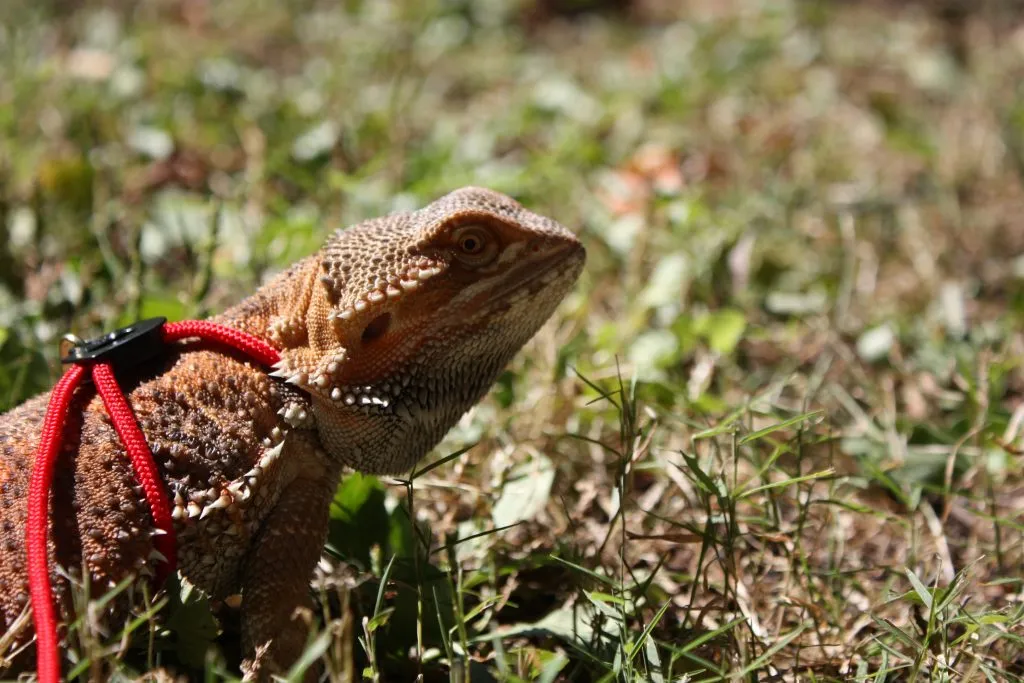
Leaving Your Beardie Alone For More than 4 Days? Do This!
Now we’ll discuss the things you should consider if you leave your beardie alone for more than four days and have a caretaker check on it.
You should get some things done before leaving and instruct the pet sitter on everything your beardie needs.
Light
Bearded dragons need 12 hours of light and 12 of darkness. You can use light timers to keep this routine going. They will help you even after you return!
If you don’t have a light timer yet, check out two of the best on the market – the Zoo Med Terrarium Controller and the Zoo Med Day Night Timer. Remember that the UV light lamp should also be turned off during the night.
Temperature
Here are the recommended temperatures for your beardie’s
| Basking area | Cool side | Air temperature |
| 108-113°F | 77-85°F | Daytime: 72-99°F Night time: 65-75°F |
This aspect is imperative because your reptile uses the environment to regulate its body temperature.
Studies show that bearded dragons can rapidly heat up if placed in spaces with high temperatures. On the other hand, it takes them a little more to cool down.
Therefore, it’s important to maintain the required temperatures – neither too high, because your beardie will heat up fast, nor too low because its metabolism and digestion will slow down, and the risk of kidney disease will increase.
A thermostat will help you control the temperature and the pet sitter will ensure that the environment is as intended.
Water and Humidity
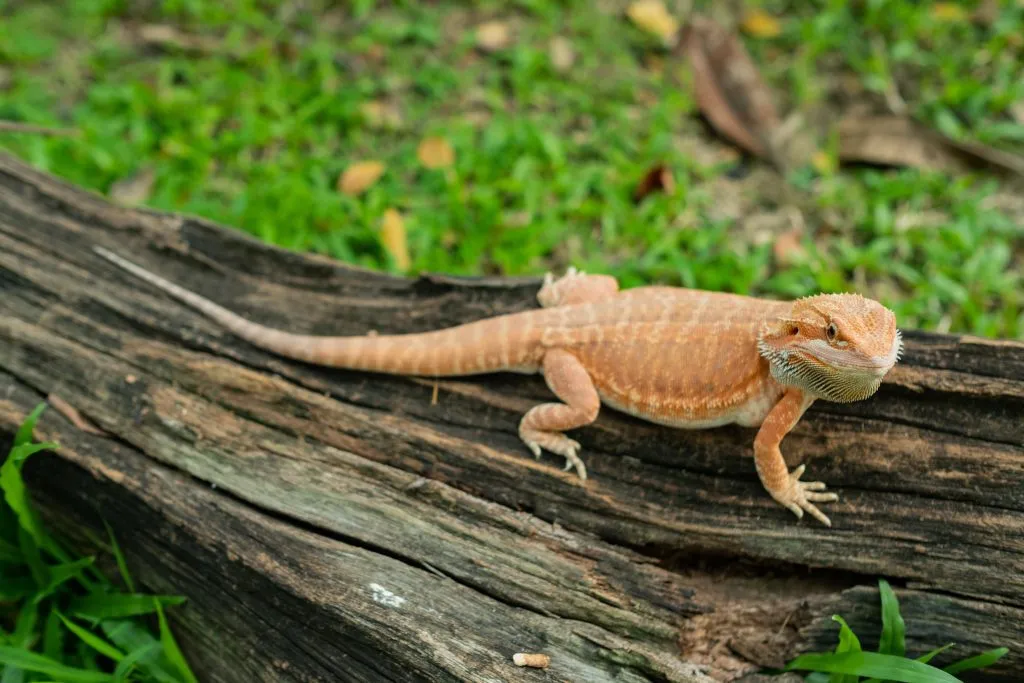
You’ll have to give your bearded dragon a bath right before you leave – this is of utmost importance to keep your reptile clean and hydrated.
Beardies have a tendency to defecate in their water dishes, so they need to be disinfected at least once a week or right after defecation. This is one of the reasons you’ll need a caretaker to look after your beardie.
As for the humidity levels – a bearded dragon’s environment shouldn’t go higher or lower than 30-40%.
This isn’t a problem if you live in a relatively dry area. Placing some plants in the
Wanna know what plants you can put in a beardie tank? Read this article!
If you live in a humid area, you probably already know that your place can reach high humidity levels overnight during rainy seasons.
Prolonged exposure to high humidity levels can cause discomfort and respiratory infections. Having someone come over to check the hygrometer and turn on/off a dehumidifier will help keep your pet comfortable and healthy.
Tank
You should clean the tank before leaving. Here are some things to consider:
- Change the substrate.
- Use a pet-safe disinfectant to clean the space from fecal matter and decomposing
food . - Remove any skin sheds or decaying plant matter.
- Clean your beardie’s
food and water dishes. - Place the
tank away from the windows. It shouldn’t get any direct sunlight either.
Webcam
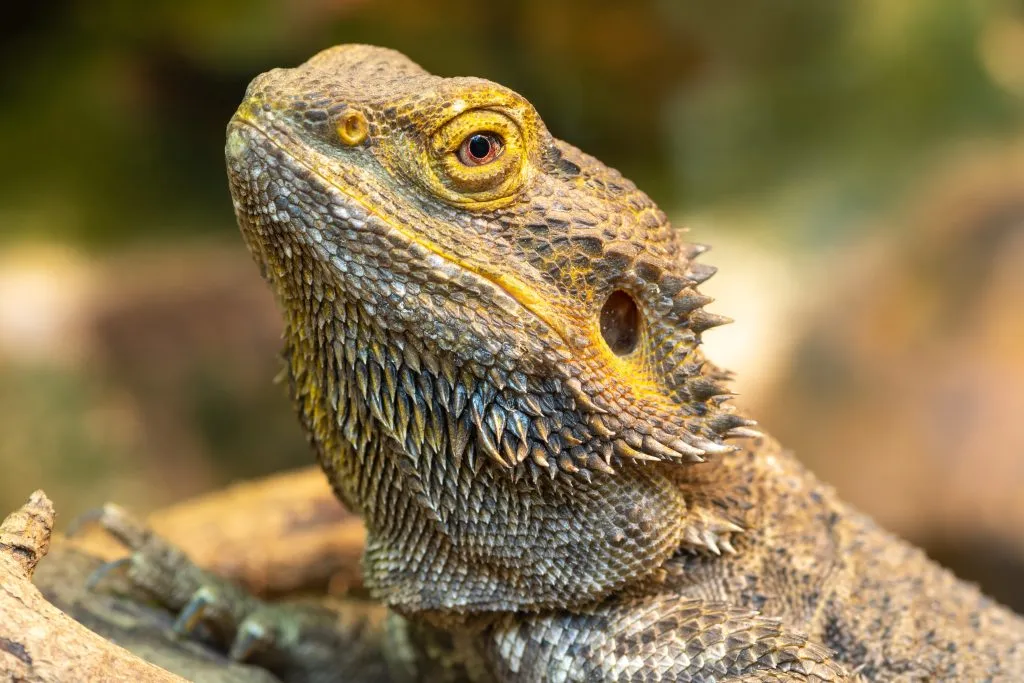
A webcam can undoubtedly help you relax, enjoy your vacation, and avoid worrying about your pet! You’ll be able to watch it at all times and ensure it’s safe and sound.
This way, you’ll also ensure that the lights are turning on and off as intended and, if something’s wrong, you can call for help right away.
Food
We already know that the amount of
Juveniles will require a pet sitter if they’re left alone for more than a day due to their crazy appetite. Otherwise, this will affect their growth process.
Subadults don’t have such a crazy appetite as juveniles, but their diet still requires much care and attention. Therefore, as for juveniles, you’ll definitely need someone to take care of them if you leave for more than a day.
Adults can generally go without
Since an adult’s diet should predominantly consist of plant matter rather than insects, you can leave some herbs inside your reptile’s
We’ve prepared something you could give your caretaker in regards to what bearded dragons eat. The options added here are foods required on a regular basis.
The insect size and feeding times should be appropriate for your beardie’s age.
We’ve also included a list of occasional treats the sitter can let your bearded dragon delight in.
| Insects | Crickets Dubia roaches Superworms Waxworms Black soldier fly larvae |
| Vegetables | Butternut squash Green beans Kabocha squash Okra Parsnip Snap peas Yucca root |
| Weeds | Chicory greens Collard greens Dandelion greens Endive Mustard greens Watercress |
| Fruits | Cactus leaves Mango Papaya |
Treats your beardie may enjoy:
- Blackberries
- Grapes
- Hibiscus
- Kiwi
- Raspberries
- Strawberries
- Yellow squash
- Zucchini
Remember that the amount of
Will an Automatic Feeder Work?
Automatic feeders will do just fine if you’re leaving for a few days. However, if your vacation lasts weeks, this is probably not the best option because automatic feeders can only provide dried insects – not really a good regular option for your beardie’s digestive system.
You can also try this Zoo Med Hanging Mealworm Feeder. However, we don’t think this can replace a pet sitter if you’re leaving for weeks. Here’s why:
- Your bearded dragon may eat too many mealworms because they aren’t dosed.
- If your pet won’t eat all the falling mealworms, they’ll remain in the
tank , which is not safe and sanitary for your reptile.
You should use this option only in the following situations:
- You won’t be gone for too long.
- You’ve decided to set up a webcam to check on your beardie and can call for help if the situation gets out of hand.
- You found a pet sitter to check on your bearded dragon, and they can clean the
tank and/or adjust the number of mealworms placed in the feeder.
Check out this article to learn more about feeding your beardie while on vacation! Furthermore, see this food chart for more details on
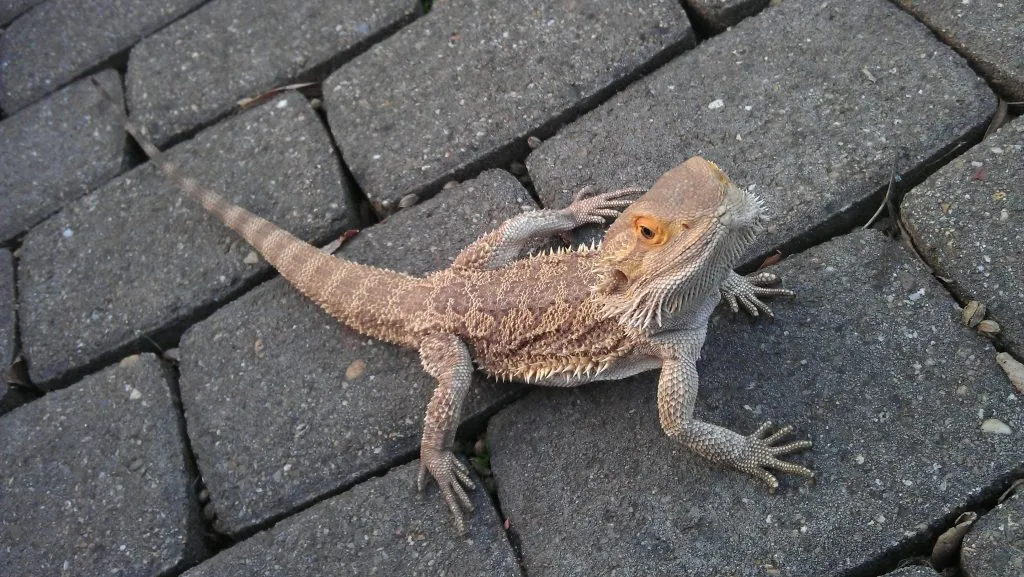
What Should You Do Once You’re Back?
We’re sure you can’t wait to return to your pet even before you leave for your trip! But don’t worry – if you’ve covered everything, your beardie will enjoy its time alone!
Clean the Tank and Give Your Beardie a Bath
Cleanliness is at the top of the list! Give your pet a bath to ensure it stays hydrated and clean. Before returning it to its habitat, you should clean the
Spend Time with Your Beardie
Your bearded dragon will miss you if you’re gone for too long! Spend some time with your reptile to remind it that everything’s going back to normal.
Let it stay on your shoulder, hold it, talk to it. This way, you’ll restore the bond that’s been disrupted while you were gone.
Here are some tips on how to have fun with your beardie!
- Enchi Ball Python: A Unique and Stunning Morph of Python regius - March 27, 2025
- Emerald Tree Monitor: The Enigmatic Green Guardian of the Rainforest - March 26, 2025
- The Egyptian Cobra (Naja haje): A Fascinating Serpent - March 25, 2025
